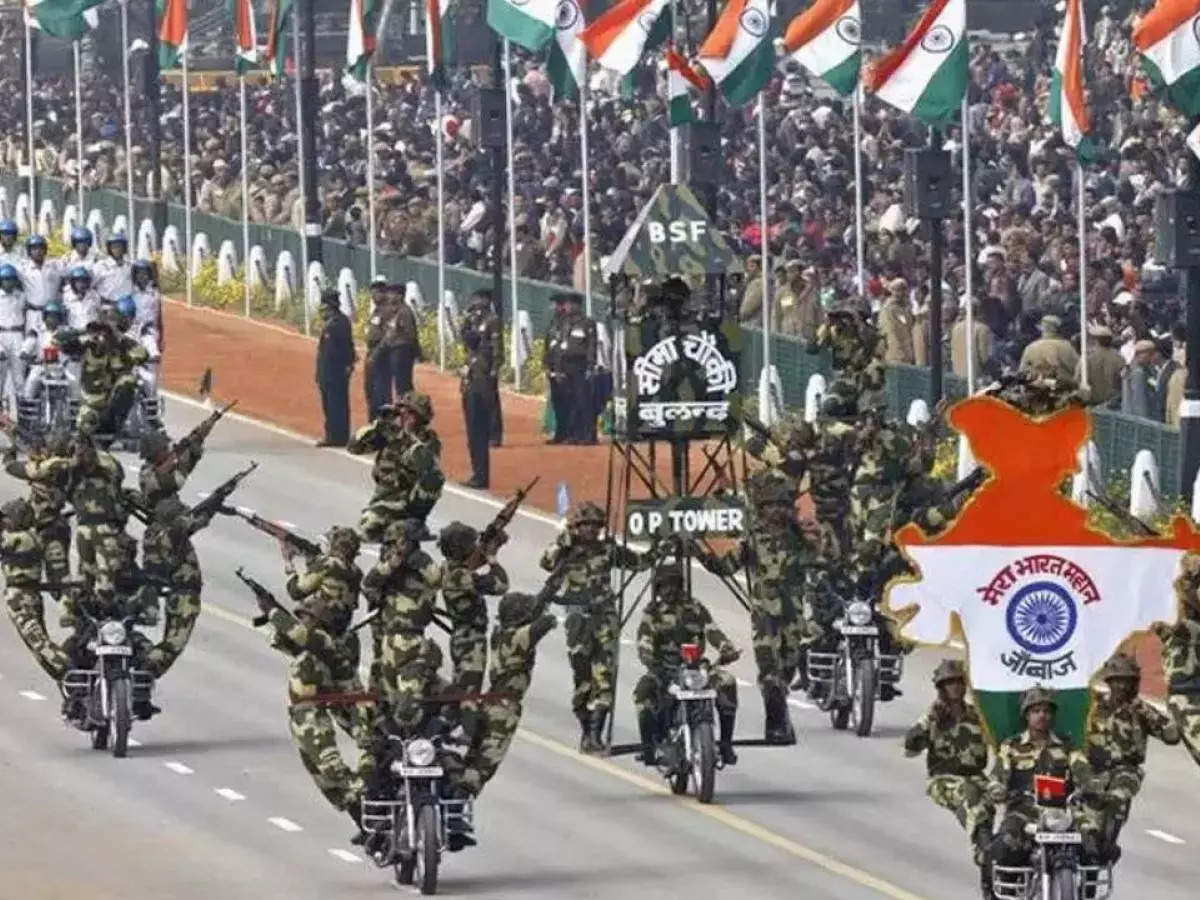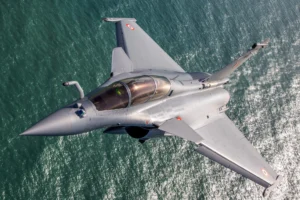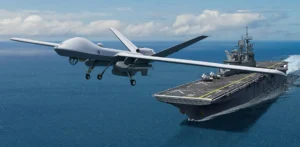With Indian President Draupadi Murmu watching over the Republic Day Parade in the presence of Prime Minister Narendra Modi and chief guest French President Emmanuel Macron, India’s forces put on a splendid show at the Kartavya Path on Friday morning.
Built on the dual motifs of ‘Viksit Bharat’ and ‘Bharat – Loktantra ki Matruka,’ the parade featured around 13,000 special guests. This initiative aims to offer people from diverse backgrounds an occasion to join the festivities and promote public participation during the platinum celebrations.
Defence forces’ indigenous might
Showcasing India’s advancing capabilities in ship construction, the Indian Navy tableau showcased the impressive domestically manufactured aircraft carrier INS Vikrant along with highly capable escort ships such as INS Delhi, INS Kolkata, and INS Shivalik, alongside the LCA, the ALH, and the Kalvari-class submarine.
The Indian Air Force (IAF) contingent, consisting of 144 airmen and four officers, was under the leadership of Squadron Leader Rashmi Thakur. Squadron Leaders Sumita Yadav and Pratiti Ahluwalia, along with Flight Lieutenant Kirti Rohil, accompanied the contingent commander as supernumerary officers.
The middle part of the IAF’s tableau showcased an IAF Tejas and a Su-30 aircraft soaring over the Indian Ocean Region, symbolizing the continually expanding influence of the IAF, both over land and sea.During the parade, the military displayed a variety of domestically produced weaponry and military gear, including missiles, drone jammers, surveillance systems, vehicle-mounted mortars, and BMP-II infantry combat vehicles. Notably, an all-women tri-services contingent participated in the nation’s largest ceremonial event for the first time.Tank T-90 Bhishma, NAG missile system, infantry combat vehicle, all-terrain vehicle, weapon locating radar system ‘Swathi’, drone jammer system, and medium range surface-to-air missile were among the key displays by the mechanised columns of the Army.
India’s Nari Shakti
Demonstrating the empowerment of women in the nation, the 90-minute parade along the ceremonial boulevard commenced with more than 100 female artists playing traditional Indian musical instruments like Sankh, Naadswaram, and Nagada, a departure from the traditional military bands.
Following this, four Mi-17 IV helicopters from the 105 Helicopter Unit cascaded flower petals over the audience gathered at Kartavya Path. This was succeeded by ‘Aavaahan,’ a musical performance featuring over 100 female artists playing various percussion instruments, symbolizing the strength of women.
Furthermore, approximately 15 female pilots captivated the audience during the Indian Air Force’s fly-past. Notably, the contingents of the Central Armed Police Forces (CAPF) exclusively comprised women personnel.
Cultural colour
Indian states and union territories were once again given a platform to exhibit their distinctive cultures and identities at Bharat Parv. This esteemed national festival is celebrated annually in New Delhi, coinciding with India’s Republic Day festivities, highlighting India’s cultural richness with traditional cuisines, folk dances, music, arts and crafts, along with the presentation of tableaux representing different states and union territories. It serves as a means to foster unity and national pride.
Women empowerment in the nation was once again highlighted through cultural lenses as Manipur’s tableau shed light on women working with lotus stems and creating yarns using traditional charkhas. Rajasthan’s presentation showcased women-run handicraft industries and traditional crafts like bandhej and bagru print.
The skills of women in Odisha were highlighted through their involvement in the handloom sector and terracotta artefacts while Andhra Pradesh’s tableau was centred around their school education transformation. Ladakh presented the Indian women’s ice hockey team.
The Culture Ministry’s Republic Day tableau carried replicas of B R Ambedkar handing over the Constitution to the country’s first president Rajendra Prasad, as well as ancient symbols that championed the democratic ethos.
Telangana’s tableau celebrated the heroic efforts of leaders like Komaram Bheem, Ramji Gond and Chityalallamma (Chakalillamma), whose indomitable spirits have become integral to the folklore of the region.
Uttar Pradesh’s tableau represented an artistic image of Ram Lalla whose new idol was recently consecrated at a grand temple in Ayodhya.









